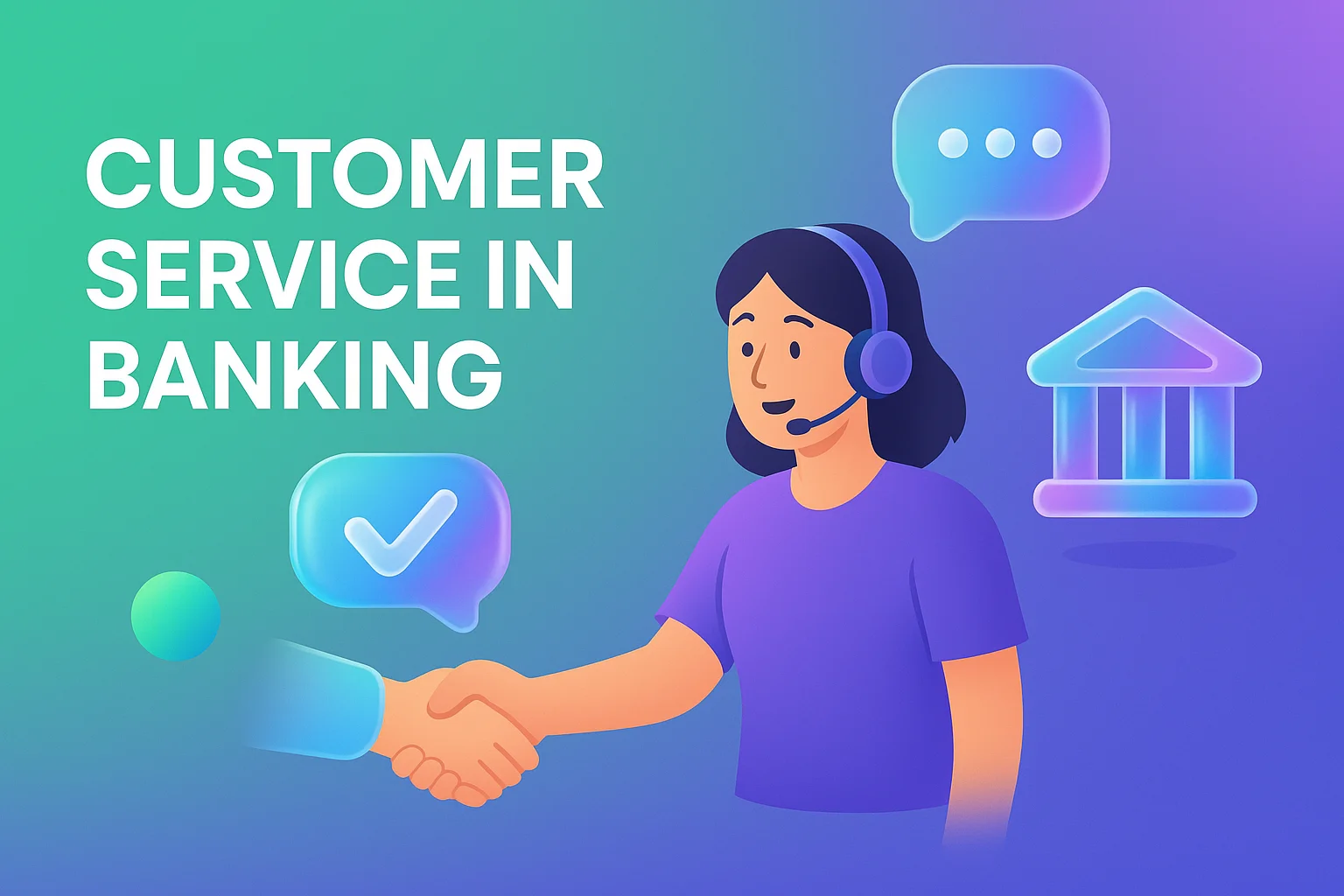How to Handle Angry Customers: 17 Tips & Examples
- October 6, 2015
- 16 mins read
- Listen

A happy customer is easy to manage, but when it comes to handling an angry customer, that’s where the real challenge begins.
A report states that 72% of customers will share their good experiences with others, but 13% will tell 15 or more people about a negative experience.
Just one unresolved complaint can ripple across social media and review platforms, tarnishing your brand’s image and driving potential customers away.
Ignoring angry customers doesn’t just mean losing the business—it invites negative reviews, damages your reputation, and creates long-term trust issues that are hard to repair.
To safeguard your brand and turn challenges into opportunities, you need to know how to handle angry customers effectively.
17 Effective Tips for Dealing With Angry Customers
Dealing with angry customers is difficult, but there are proven tips to handle them. However, before jumping into the tips to deal with irate customers, let me give you a quick framework you can follow.
For a structured approach, consider the LEARN model, which helps customer service teams handle anger systematically:
L – Listen: Pay attention without interrupting to understand the full scope of their concerns.
E – Empathize: Acknowledge their frustration with empathy statements.
A – Apologies: Offer a heartfelt apology for the inconvenience caused.
R – Resolve: Provide a solution or steps to address their issue.
N – Notify: Keep the customer informed and follow up after the resolution.
Handling angry customers effectively requires a mix of communication skills, empathy, and problem-solving. Here are 20 actionable strategies with examples to guide your approach:
1. Stay calm and composed
When a customer is upset, staying calm is your superpower. Don’t mirror the customer’s anger. Take a deep breath, remind yourself that their frustration isn’t personal, and focus on the issue at hand.
Tips:
- Prevent the situation from escalating by staying calm.
- Focus on resolving the issue instead of reacting emotionally.
Your response will be based on the situation. Here is an example of a customer who is upset about a delayed order.
- “I understand this delay has caused frustration, and I’m here to resolve it as quickly as possible.”
2. Listen actively
Let the customer express their concerns without interrupting. This shows that you value their opinion and helps you fully understand the problem.
Tips:
- As you listen, take the opportunity to build rapport with the customer.
- You can use phrases like, “I see,” “Sure,” etc to provide the assurance that you are listening carefully.
When a customer complains about poor service, you can say.
- “Thank you for sharing this with me. Let me make sure I understand everything correctly before we move forward.”
3. Provide personalized support
Addressing an angry customer starts with simple, human gestures. Like using their name and introducing yourself. These small actions go a long way in breaking the ice. And creates a connection, reminding them there’s a person on the other side who genuinely wants to help.
Businesses nowadays adopt customer support tools to provide exceptional service. Advanced solutions like chatbots and live chat platforms are gaining popularity for their ability to streamline customer interactions. They automate routine tasks, offer instant resolutions, and provide insights that help support agents personalize responses effectively.
Here are the tips for providing personalized customer service:
- You can offer personalized recommendations by observing their past history.
- Use AI to offer proactive and consistent assistance.
For example, REVE Chatbot and Live Chat take personalized support a step further. With features like proactive chat and real-time query resolution, they empower customer support teams to handle challenging interactions efficiently. By addressing issues before they escalate, these tools create a seamless and satisfying customer experience.
4. Show empathy
Put yourself in their shoes and acknowledge their feelings. Empathy helps defuse tension and reassures the customer that you care. Using empathy statements can make a significant difference in calming frustrated customers and building trust.
Tips:
- Validate their feelings with empathetic statements such as, “I understand why this is frustrating.”
- Show genuine care for their concerns to build trust.
For example:
- “I can see how this situation has been upsetting for you. Let’s find a solution together.”
5. Apologize sincerely
A heartfelt apology can work wonders. Even if the issue wasn’t your fault, taking responsibility shows your commitment to resolving the matter. Using the right words, like those shared in sorry for the inconvenience, can help convey genuine sincerity and reinforce your dedication to customer satisfaction.
Tips:
- Offer a heartfelt apology, even if the issue wasn’t your fault.
- Acknowledge the inconvenience caused with sincerity.
Example:
- “I’m truly sorry for the inconvenience you’ve experienced. Let’s work on resolving this immediately.”
6. Avoid taking things personally
Understand that when customers lash out, they are often reacting to their own emotions and circumstances, not your actions. Their anger is a product of feeling powerless or misunderstood.
By acknowledging that their feelings are rooted in a broader situation, you can maintain emotional distance and prevent yourself from taking it personally. This perspective helps you remain objective, empathetic, and focused on resolving the issue at hand.
Tips:
- Practice emotional detachment as the customer’s anger is not on you.
- Understand the customer’s emotions and shift your focus to empathy.
7. Offer immediate and real-time support
When customers are upset, delays in addressing their concerns can quickly escalate frustration. Responding in real-time not only resolves issues faster but also shows that you value their time and take their concerns seriously. A single unresolved complaint can lead to negative word-of-mouth, impacting your reputation significantly.
To handle these situations effectively:
- Use live chat to address sales and support queries instantly and keep customers engaged.
- Leverage tools like co-browsing and video support to collaborate with customers and resolve complex issues during the first interaction.
- Implement AI chatbots to automate repetitive tasks and provide quick answers, ensuring no time is wasted.
- Whenever possible, resolve the issue on the spot. For instance: “I’ve issued a refund to your account. It should reflect within 2-3 business days.”
8. Ask clarifying questions
When a customer is upset, it’s crucial to fully understand their concerns before jumping to conclusions. If something isn’t clear, don’t hesitate to ask for more details. By digging a little deeper, you show that you genuinely care about resolving the issue and want to get to the root of the problem.
Tips:
- Identify the root of the problem by asking detailed and specific questions.
- Clarify any misunderstandings to ensure you address the real issue.
Example:
- “Can you tell me more about when the issue started? This will help me find the best solution.
9. Offer alternative solutions
There are times when you can’t give a customer exactly what they want. But that doesn’t mean you’re out of options. Offering alternatives shows that you’re committed to helping them, even if the perfect solution isn’t available. By suggesting viable alternatives, you can still meet their needs and turn a frustrating experience into a positive one.
Tips:
- Try to provide alternatives where necessary.
- Be clear about the alternative solution you will be able to provide.
Example:
- “We’re out of stock for that product, but I can offer you a similar item or a discount for your next purchase.”
10. Use positive language
The words you use can either defuse a situation or make it worse. When you’re dealing with an angry customer, the way you phrase things matters just as much as the solution itself.
Instead of focusing on what’s not possible, try to reframe the conversation around what you can do to help. This shift in language can help create a more constructive, solution-focused environment and calm even the most frustrated customer.
Tips:
- Shift the focus to solutions by using positive language.
- Replace phrases like “I can’t do that” with “Here’s what I can do to help.”
Example:
- Instead of saying, “We can’t do that,” try: “Here’s what we can do to help resolve this issue.”
11. Set realistic expectations
Nobody likes to be kept in the dark, especially when they’re already upset. Being upfront about what you can do and how long it will take goes a long way in earning their trust. When you’re clear and transparent, it shows that you respect their time and genuinely care about solving the issue.
Tips:
- Be transparent about what can be done and the time it will take.
- Avoid overpromising to maintain trust.
Example:
- “I’ll escalate this to our team, and you can expect an update within 48 hours.”
12. Offer compensation (when appropriate)
Sometimes, a small gesture can make a huge difference in turning an upset customer into a loyal one. Think about it—offering a discount, refund, or even a little extra service shows that you’re willing to go the extra mile to make things right.
Tips:
- Provide goodwill gestures like discounts, refunds, or free services.
- Use compensation to rebuild trust and strengthen relationships.
Example:
- “We’d like to offer you a 20% discount on your next purchase as an apology for this inconvenience.”
13. Involve experts in complex issues
Sometimes, despite your best efforts, a customer issue may require higher-level intervention. Escalating the problem to a supervisor or specialized team shows the customer that their concerns are taken seriously and ensures a proper resolution. Clear communication during escalation can prevent frustration and maintain trust.
Tips:
- Involve a supervisor or specialized team if required for resolution.
- Communicate the escalation process to the customer clearly.
Example:
- “I want to make sure this is resolved properly. Let me involve our manager for further assistance.”
14. Empower your team
Your team is on the front line of customer interactions, and their ability to make decisions quickly can make or break the customer experience. Empowering your staff with training and resources not only boosts their confidence but also leads to faster, more effective resolutions.
Tips:
- Train your staff to make on-the-spot decisions for faster resolutions.
- Equip them with resources to address common problems effectively.
15. Follow up after resolution
Resolving a problem is just the first step; following up shows your customers that you genuinely care about their satisfaction. A simple check-in can leave a lasting positive impression and turn a frustrated customer into a loyal advocate.
Tips:
- You may send a personalized email or message through your live chat platform thanking them for their patience and confirming the solution worked.
- Offer a small token of appreciation, like a discount or free service, to reinforce their trust and loyalty.
16. Train your agents for emotional intelligence
Emotional intelligence (EI) is essential for navigating difficult customer interactions. A team that knows how to manage their emotions and respond sensitively can turn even the angriest customer into a satisfied one.
Tips:
- Teach your team how to manage emotions during difficult interactions.
- Encourage resilience and sensitivity in dealing with angry customers.
17. Show appreciation to your customers
Angry customers who provide feedback are giving you an opportunity to improve, and showing gratitude can help turn the interaction into a positive experience. A little appreciation can go a long way in rebuilding trust and loyalty.
Tips:
- Thank customers for their feedback and patience.
- Use their insights to improve your services and processes.
Example:
- “Thank you for bringing this to our attention. I’ll document your feedback so we can improve.”
How to Respond to Angry Customers (5 Templates)
When it comes to handling customer complaints, staying consistent is so important, no matter how they reach out, whether it’s through email, phone, or live chat. Email gives you the perfect opportunity to take your time & carefully choose your words.
You can show genuine empathy while offering clear solutions to fix the issue. But remember, even with email, timing matters! You don’t want to leave customers waiting too long and feeling ignored.
Below are five effective email templates to help you handle angry customers with professionalism and care.
1. Apology for a product/service issue email template
Every customer expects quality when they choose a product or service, and rightly so. When something doesn’t meet those expectations, whether it’s a faulty product, incomplete service, or a mistake—it can feel like a letdown.
Here is a sample email template for showing an apology for a product/service:
Hi [Customer’s Name],
We sincerely apologize for the inconvenience you experienced with [specific product/service]. We understand how frustrating this must have been for you.
At [Company Name], we strive to provide the best for our customers, and it’s clear we fell short this time. To make it right, we have [specific resolution, e.g., issued a replacement/refund, expedited your order, etc.].
We appreciate your patience and understanding. Please feel free to reach out if you have any further concerns or questions.
Warm regards,
[Agent Name]
2. Delayed delivery or order apology email template
Customers expect their orders to arrive quickly and on time. When a delivery is delayed, especially for something time-sensitive like a holiday gift or an urgent item, it’s natural for frustration to build.
The best approach is to inform customers about delays proactively, ideally before the delivery date has passed. However, sometimes delays slip through the cracks. If a customer reaches out upset about a late order, it’s crucial to act fast—track the package, identify the issue, and send a clear email with an update on its status as soon as possible.
Dear [Customer’s Name],
We regret to inform you that your order #[Order Number] has been delayed due to [reason, e.g., unforeseen logistical issues]. We understand how important this is to you and deeply apologize for the inconvenience.
To resolve this, we have [specific action, e.g., expedited your delivery, provided a discount or credit]. We expect your order to arrive by [new delivery date].
Thank you for your patience as we work to make this right. Should you have any questions, don’t hesitate to reach out at [contact email/number].
Sincerely,
[Agent Name]
3. Response to billing error email template
Billing issues can be incredibly frustrating for customers. Whether it’s an overcharge, a duplicate payment, or an incorrect invoice, these mistakes can shake their trust and leave them feeling uneasy.
When a customer brings up a billing error, it’s important to address their concerns quickly and professionally. A well-crafted email can help reassure them that you’re taking the matter seriously and working to resolve it promptly.
Dear [Customer’s Name],
Thank you for bringing the billing issue to our attention. We deeply regret the error and any inconvenience it has caused you.
After reviewing your account, we found that [explanation of the issue]. We have already corrected this, and you will see the updated amount on your next statement. Additionally, we’ve added [specific compensation, if applicable, e.g., a credit of $X] as an apology for the oversight.
If you have further concerns, please don’t hesitate to contact me directly at [your contact details]. We value your trust and are committed to serving you better.
Best regards,
[Agent Name]
4. Technical issue resolution email template
Technical problems can disrupt a customer’s experience and cause understandable frustration. Whether it’s a glitch in your app, a broken feature, or a service outage, these issues can leave customers feeling stuck and looking for answers.
When responding to a customer about a technical issue, it’s essential to acknowledge their frustration, provide clear updates, and outline the steps being taken to resolve the problem. A thoughtful and transparent email can go a long way in restoring their confidence and trust.
Hi [Customer’s Name],
We’re sorry to hear about the technical issue you faced with [specific product/service]. Our team has identified the problem and resolved it as of [time/date].
We understand how important it is for [specific functionality or service] to work seamlessly, and we regret the inconvenience this has caused. To prevent this from happening again, we’ve [specific actions taken].
If you continue to experience any issues, please don’t hesitate to reach out. Your satisfaction is our priority, and we’re here to assist you.
Kind regards,
[Agent Name]
5. Generic complaint handling email template
Not every complaint fits neatly into a specific category, but that doesn’t make it any less important. Whether it’s feedback about service, a misunderstanding, or an unmet expectation, customers want to feel heard and valued when they raise a concern.
When handling a general complaint, your email should focus on acknowledging their frustration, expressing empathy, and showing a genuine commitment to making things right. A thoughtful response can turn a negative experience into an opportunity to strengthen the customer relationship.
Dear [Customer’s Name],
Thank you for taking the time to share your concerns with us. We understand how frustrating it must have been to experience [specific issue].
At [Company Name], your satisfaction matters. To address this, we’ve [specific resolution or next steps, e.g., initiated an investigation, processed a refund, scheduled a follow-up call].
Please rest assured that we’re working to ensure this issue is resolved promptly. If you’d like to discuss this further or have additional concerns, feel free to contact me directly at [contact information].
Thank you for giving us the opportunity to make things right.
Sincerely,
[Agent Name]
Conclusion
Handling angry customers isn’t just about resolving an issue. It’s about turning a challenging moment into an opportunity to show that you genuinely care. By applying the tips shared here, you’ll not only address your customers’ immediate concerns but also build stronger, trust-filled relationships that stand the test of time.
Remember, every frustrated customer is giving you a chance to shine and demonstrate your commitment to exceptional service. Whether it’s a sincere apology, an empathetic ear, or a proactive solution, these actions can transform dissatisfaction into loyalty.
Sign up for a free trial or book a free demo with REVE Chat today! See how our solutions can help you handle challenging situations effortlessly while creating meaningful customer connections.
Frequently Asked Questions
To handle an angry customer effectively:
1. Listen actively and let them vent.
2. Stay calm and avoid taking their anger personally.
3. Apologize sincerely for the inconvenience.
4. Offer solutions to resolve their issue quickly.
5. Follow up to ensure their satisfaction.
Avoid these common mistakes:
1. Don’t interrupt or dismiss their feelings.
2. Don’t argue or blame the customer.
3. Don’t take their anger personally or lose your temper.
4. Don’t make empty promises—only offer solutions you can deliver.
5. Don’t ignore their concerns; follow up to ensure resolution.
To calm an angry person:
1. Listen without interrupting or judging.
2. Acknowledge their emotions with empathetic statements like, “I understand why you’re upset.”
3. Speak in a calm, steady voice.
4. Avoid arguments or defensive behavior.
5. Redirect the conversation toward finding a solution.
Handling angry clients in social work involves a balance of empathy and professionalism:
1. Stay calm and avoid reacting emotionally.
2. Acknowledge their feelings and validate their concerns.
3. Use active listening to understand their perspective.
4. Clarify boundaries and focus on collaborative solutions.
5. Seek support from colleagues or supervisors if needed.
Dealing with abusive customers requires maintaining professionalism while setting boundaries:
1. Calmly ask them to lower their tone or language.
2. Explain that abusive behavior will not be tolerated.
3. Offer to escalate the issue to a supervisor if necessary.
4. If abuse continues, politely end the conversation and document the incident for review.



